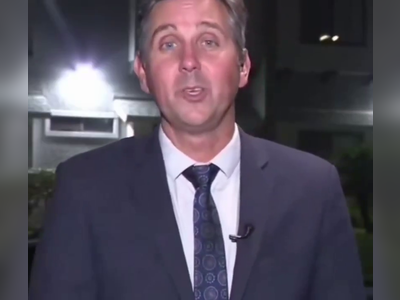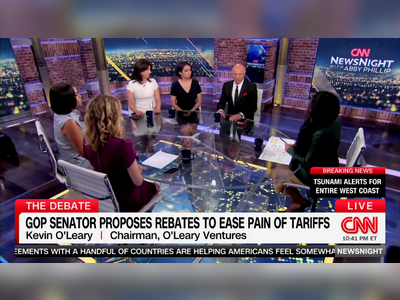Trump Administration Proposes Repeal of Obama‑Era Endangerment Finding, Dismantling Regulatory Basis for CO₂ Emissions Limits
EPA Administrator Lee Zeldin unveils proposal to revoke 2009 endangerment finding and undo key standards on vehicles and power‑plant emissions
On July 29, 2025, the U.S. Environmental Protection Agency proposed revoking its 2009 “endangerment finding,” which classified carbon dioxide and other greenhouse gases as threats to public health and welfare under the Clean Air Act.
The finding has served as the legal foundation for federal regulation of greenhouse gas emissions across vehicle, industrial, and energy sectors .
The proposal, announced by EPA Administrator Lee Zeldin at a plant in Indiana, also includes plans to rescind federal tailpipe emission standards aimed at encouraging electric vehicle adoption and to roll back carbon and mercury emission limits for fossil fuel‑fired power plants.
Zeldin described the move as the most significant deregulatory effort in U.S. history .
Zeldin cited a 2024 Supreme Court decision that narrowed agency interpretive authority, arguing that only Congress can authorize regulation of greenhouse gases under the Clean Air Act.
He asserted that the prior ruling misapplied the Clean Air Act and imposed undue economic burdens .
The proposed repeal enters a 45‑day public comment period and interagency review.
Legal experts anticipate extensive litigation from states and environmental groups, pointing to prior Supreme Court rulings affirming EPA’s authority to regulate greenhouse gases .
Environmental advocacy organisations and former EPA officials issued immediate criticism, warning that the repeal undermines scientific consensus, jeopardises air quality safeguards, and exposes frontline communities to elevated health risks.
Statements from public health groups cited potential increases in respiratory illnesses and pollution‑related mortality .
Industry reactions were mixed.
Automakers and oil and gas trade associations welcomed the rollback as a reduction in regulatory uncertainty and operational cost.
By contrast, major integrated oil companies acknowledged climate risks and emphasised the importance of emissions reduction strategies .
In June 2025, the EPA under Zeldin had also formally proposed separate rules to repeal:- The 2015 greenhouse gas emissions standards for new fossil fuel‑fired power plants.- The 2024 updates to emissions guidelines for existing coal and gas plants, including the Mercury and Air Toxics Standards (MATS) .Those proposals include alternative repeal options and argue that GHG emissions from domestic power plants do not contribute significantly to endangerment of public health under Clean Air Act provisions.
The agency estimated regulatory cost savings of approximately US $1.2 billion annually, or up to US $19 billion over two decades beginning in 2026 .
The endangerment finding trace its origins to the 2007 Supreme Court ruling in Massachusetts v.
EPA, which compelled the EPA to evaluate greenhouse gases as air pollutants.
The 2009 determination has survived multiple legal challenges and served as the basis for rules governing mobile sources, power generation, and industrial emissions .
Political allies of the administration, including congressional Republicans and agency officials, praised the proposal as fulfilling an executive directive from Day One of the administration aimed at re‑evaluating the legality and applicability of the endangerment finding.
That executive order directed EPA to submit recommendations on the matter within 30 days, which the agency fulfilled prior to issuing the July 29 proposal .
If finalised, the repeal of the endangerment finding would remove the foundational scientific and legal justification for existing climate rules.
Observers have noted that even if courts block implementation, the procedural delays could stall future regulation.
The EPA proposal must still navigate administrative rulemaking requirements and legal scrutiny before taking effect .
The finding has served as the legal foundation for federal regulation of greenhouse gas emissions across vehicle, industrial, and energy sectors .
The proposal, announced by EPA Administrator Lee Zeldin at a plant in Indiana, also includes plans to rescind federal tailpipe emission standards aimed at encouraging electric vehicle adoption and to roll back carbon and mercury emission limits for fossil fuel‑fired power plants.
Zeldin described the move as the most significant deregulatory effort in U.S. history .
Zeldin cited a 2024 Supreme Court decision that narrowed agency interpretive authority, arguing that only Congress can authorize regulation of greenhouse gases under the Clean Air Act.
He asserted that the prior ruling misapplied the Clean Air Act and imposed undue economic burdens .
The proposed repeal enters a 45‑day public comment period and interagency review.
Legal experts anticipate extensive litigation from states and environmental groups, pointing to prior Supreme Court rulings affirming EPA’s authority to regulate greenhouse gases .
Environmental advocacy organisations and former EPA officials issued immediate criticism, warning that the repeal undermines scientific consensus, jeopardises air quality safeguards, and exposes frontline communities to elevated health risks.
Statements from public health groups cited potential increases in respiratory illnesses and pollution‑related mortality .
Industry reactions were mixed.
Automakers and oil and gas trade associations welcomed the rollback as a reduction in regulatory uncertainty and operational cost.
By contrast, major integrated oil companies acknowledged climate risks and emphasised the importance of emissions reduction strategies .
In June 2025, the EPA under Zeldin had also formally proposed separate rules to repeal:- The 2015 greenhouse gas emissions standards for new fossil fuel‑fired power plants.- The 2024 updates to emissions guidelines for existing coal and gas plants, including the Mercury and Air Toxics Standards (MATS) .Those proposals include alternative repeal options and argue that GHG emissions from domestic power plants do not contribute significantly to endangerment of public health under Clean Air Act provisions.
The agency estimated regulatory cost savings of approximately US $1.2 billion annually, or up to US $19 billion over two decades beginning in 2026 .
The endangerment finding trace its origins to the 2007 Supreme Court ruling in Massachusetts v.
EPA, which compelled the EPA to evaluate greenhouse gases as air pollutants.
The 2009 determination has survived multiple legal challenges and served as the basis for rules governing mobile sources, power generation, and industrial emissions .
Political allies of the administration, including congressional Republicans and agency officials, praised the proposal as fulfilling an executive directive from Day One of the administration aimed at re‑evaluating the legality and applicability of the endangerment finding.
That executive order directed EPA to submit recommendations on the matter within 30 days, which the agency fulfilled prior to issuing the July 29 proposal .
If finalised, the repeal of the endangerment finding would remove the foundational scientific and legal justification for existing climate rules.
Observers have noted that even if courts block implementation, the procedural delays could stall future regulation.
The EPA proposal must still navigate administrative rulemaking requirements and legal scrutiny before taking effect .










